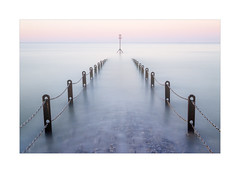Banten Bay SCUBA Dive Sites
Category: Sunda Strait › Banten Bay
| Banten Bay at a Glance | |
|---|---|
| Access: | 1 hour drive from Jakarta through the Jakarta-Merak toll road to Bojonegara (Cilegon Timur exit), and another half an hour or so to Grenyang, a small fisherman port. After that 1-1.5 hour of wooden boat ride (speed boat will be quicker) to the wreck site. |
| Reef Type: | no reef, the battleships rest on a sandy-silty bottom |
| Marine Life: | barracuda, scorpionfish, pufferfish, moray eels |
| Coral Condition: | good |
| Visibility: | often bad (+/- 6 meters), can reach 15 meters |
| Current: | often strong |
| Highlights: | WW II battleship wrecks |
| Tips: | use GPS and fish finder/echo sounder, because finding the wreck could be tricky |
| Difficulty: | difficult |
Banten Bay is not your usual dive destination. There are other dive locations accessible from Jakarta, which are easier and offer more variety in terms of diving and marine life. However this area offers an interesting mix between diving and history.
Here in this area rest two battleships that have seen action in the Sunda Strait Battle during the World War II that marked the crumbling of the Allied power in the Dutch East Indies in the hands of the Japanese. Allied cruisers HMAS Perth and USS Houston were attempting to escape through the Sunda Strait on the evening of 28 February 1942 when they encountered a huge Japanese fleet. Overwhelmed, both cruisers were sunk on the early hours of 1 March 1942.
Now the wrecks lie within 5 kms of each other in the sandy-silty bottom of the Sunda Strait off the mouth of Banten Bay. Around 8 kms north of Pulau Panjang the Australian cruiser HMAS Perth lies on her port side at position 05.51.42S latitude and 106.07.52E longitude and a depth of approximately 39 meters. To the north the American cruiser USS Houston lies on her starboard side at position 05.48.45S latitude and 106.7.55E longitude and a depth of around 33 meters. Finding the exact location is not easy and apart from using GPS, a fish finder or echo sounder is probably very useful.
Current is often strong, so anchor line is needed for ascending and descending. Visibility is typically quite bad, around 6 meters most of the time, though there has been reports of visibility reaching 15 meters. Diving is usually done between March and September to avoid stormy sea.
Both ships, each has a length of more or less 180m, are still more or less intact though covered with corals. The holes made by torpedoes are also visible. Marine life living there includes barracuda which was spotted in USS Houston, scorpionfish, pufferfish and
The volcanic islands of Sebesi and Sebuku are located approximately 20kms north-east of the Krakatau volcano complex. Located only around 10kms south-west of Rajabasa volcano in Lampung, it is by far nearer to the shores of the southern tip of Sumatra, than to Java. From the small ports in the western part of Java, such as Carita or Paku, the islands can be reached in about 2 hours of speed boat ride, depending on the current in the Sunda Strait.
Sunda strait
A typical one day trip starting at 7am from Carita will get you two dives around Sebuku and Sebesi, arriving back at Carita around sundown. A live aboard trip of 3 days is probably the best way to explore the area, as this kind of trip can include dive sites around Krakatau as well, and maybe Ujung Kulon. Or perhaps, because in Sebuku the attraction is the wreck of a Dutch destroyer Evertsen which was gunned down by the Japanese on the same day and the same battle as the Australian cruiser HMAS Perth and the American cruiser USS Houston laying in Banten Bay, a diving cum WW II historical trip could be arranged to include all three wrecks.
The two islands are not yet very popular for diving, probably due to their relatively far locations from Java (though it is quite near Sumatra). Other reasons could be that apart from the Evertsen wreck, there are no other dive highlights in this area, therefore people prefer to dive around Rakata or the young and active Anak Krakatau further south. However, these islands could provide an alternative to the Krakatau volcano complex dive sites.
Related Articles
- Magazine: The Dive Site (learntodivetoday.wordpress.com)
- Scuba Diving Tour Locations Trip: Arranging The Perfect Adventure (jeo007.wordpress.com)
- Scuba Diving Bali| Scuba Diving Tour Locations (jeo007.wordpress.com)























